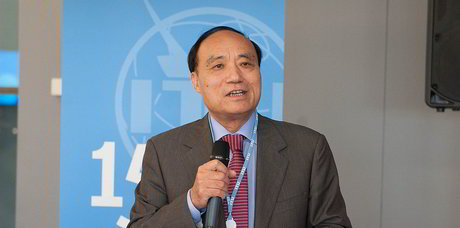ITU sets direction for wireless comms

The ITU Radiocommunication Assembly concluded last week after deliberating on new directions in radiocommunications. Held every three to four years, the Radiocommunication Assembly considered the future direction of radiocommunications and reached significant decisions that will influence the future development of radiocommunications worldwide in an increasingly wireless environment.
The Assembly (RA-15) was chaired by Mr Akira Hashimoto (Japan). Around 460 participants from 97 countries attended.
“The ITU Radiocommunication Sector plays a central role in the technological progress of telecommunications and information and communication technologies,” said ITU Secretary-General Houlin Zhao, noting that issues facing the ICT sector have become increasingly diverse and complex.
“At a time when technical solutions require greater innovation and skill, this Radiocommunication Assembly addressed the rapid changes underway in the global telecommunications environment in a manner commensurate with its future needs,” said François Rancy, director of the ITU Radiocommunication Bureau.
RA-15 set future work programs on many technical issues in the field of radiocommunications and approved worldwide radio communication standards (ITU-R Recommendations). Resolutions were approved to focus future studies and new radio communication techniques and applications while also agreeing on changes to streamline the working methods of the ITU Radiocommunication Sector (ITU-R).
RA-15 established the principles and processes for the development of IMT-2020 — the next-generation 5G mobile system — as an extension of ITU’s existing family of global standards for International Mobile Telecommunication systems (IMT-2000 and IMT-Advanced), which serve as the basis for all of today’s 3G and 4G mobile systems.
The World Radiocommunication Conference (WRC-15), 2–27 November, will address the requirements for additional spectrum to support IMT mobile broadband.
5G systems, set to become available in 2020, will usher in new paradigms in connectivity in mobile broadband wireless systems to support, for example, extremely high definition video services, real-time low latency applications and the expanding realm of the Internet of Things.
International standards for the Internet of Things (IoT) technologies and its applications, including machine-to-machine (M2M) networks, smart cities and Ubiquitous Sensor Networks (USN) have been under development in the ITU Standardisation Sector (ITU-T) and other standards bodies.
RA-15 recognised that the globally connected world of IoT builds on the connectivity and functionality made possible by radiocommunication networks and that the growing number of IoT applications may require enhanced transmission speed, device connectivity and energy efficiency to accommodate the significant amounts of data among a plethora of devices.
RA-15 resolved to conduct studies on the technical and operational aspects of radio networks and systems for IoT in collaboration with ITU-T and relevant standards development organisations.
RFUANZ report: setting the frequency for success in 2025
Last year brought a lot of internal change for RFUANZ, but the association has hit the ground...
ARCIA update: an extended event calendar for 2025
With the addition of Tasmanian events and a conference in Adelaide in September, 2025 will see...
ARCIA update: plans for 2025
ARCIA will be holding a mixture of workshop, conference and networking events in 2025, in the...





